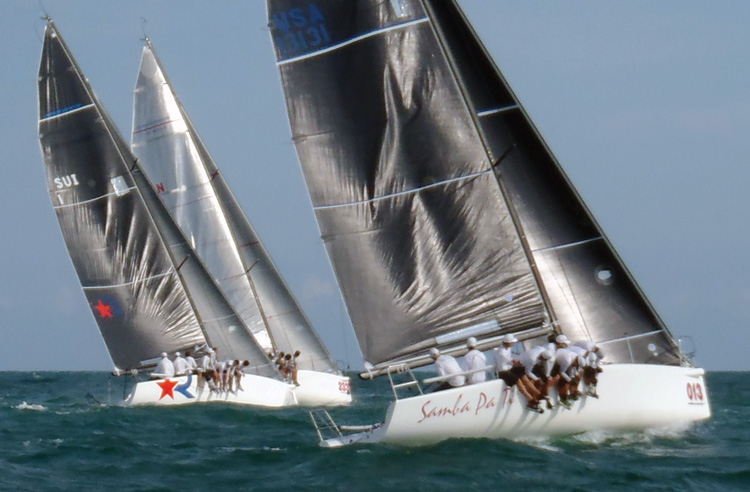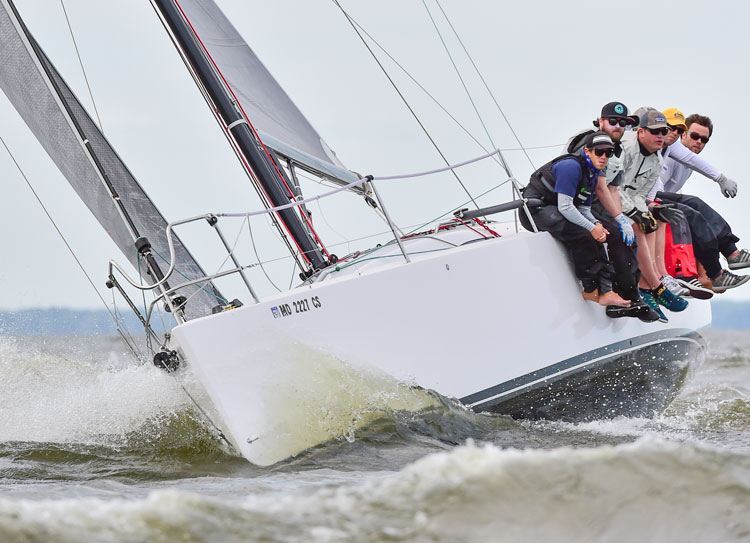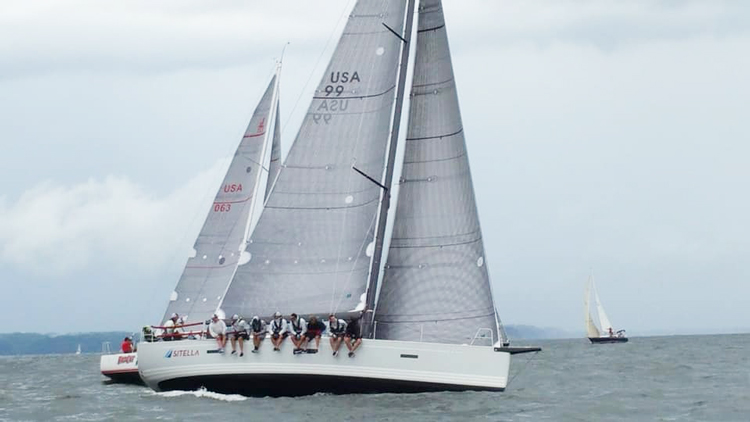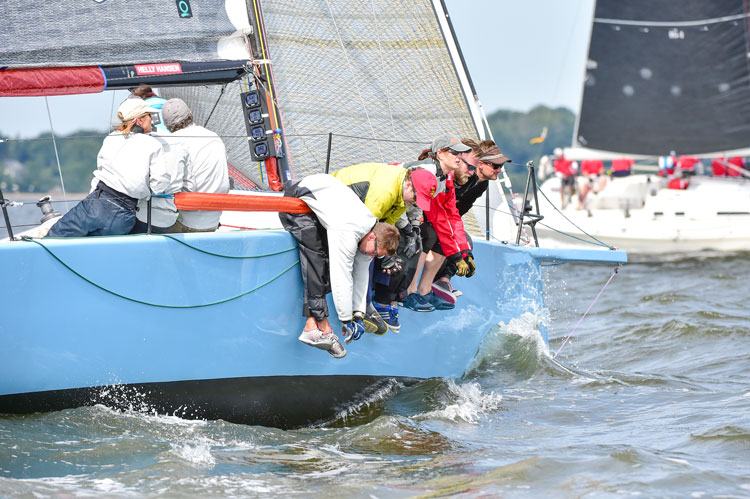In the March issue, Quantum pro David Flynn addressed that common post-race refrain “Why can’t I point?” He has broken the problem down into four conditions: light air, transition phase, optimum/medium, and heavy air. In March, he discussed light air and the transition phase. Here are the next two conditions—optimum/medium and heavy air—and expert advice on pointing better in them.

Optimum/ Medium
This is the sweet spot. Smooth water, full speed, and full power. Somewhere between 10-16 knots. It doesn’t get any easier. If you can’t point now, you never will.
Trim Hard:
In this condition it’s hard to pull the sails in far enough. Headsails can be at their maximum “in” settings (just kissing the spreader for genoas and pointed at the middle of the spreader for non-overlapping sails). The mainsheet can be trimmed so that the top telltale is stalled most of the time.
The general rule of thumb is that if the boat speed is constant and the target can be reached easily, trim harder. If the boat struggles to accelerate when the nose is pushed down, then you have overdone it. Help controlling heel can be done with small eases on the mainsheet or by letting the traveler down (the type of boat effects this choice, but a little of both is probably best regardless).
Angle of Heel Rules:
Telltales are vital in light air and the transition phase, but as you get into optimum/medium they start to be secondary indicators. All you really care about is a consistent angle of heel. If the puffs feather (let the boat come up) to keep from heeling too far. In the lulls “press” or bear off slightly to increase heel.
Perfect heel angle varies with boat type. For most displacement monohulls it will be around 22 degrees, but you don’t need a number. Heel equals weather helm. You want a little helm (three to five degrees). More than that and you have too much heel. Every puff is an opportunity to gain height. The boat is at full speed and the waves are slowing you down, so you can coast up in the puff without killing speed. You have over done it if the speed crashes. Make sure you are steering from the weather side, so you can see the puffs coming.

Hike You Fools:
The harder the team hikes, the faster you go. This is where the “sport” part of the program becomes real. Pain is directly proportional to height and speed. The headsail trimmer is more valuable hiking than trimming (not much to do anyway since the sail is all the way in). Don’t let concern about getting ready for the spinnaker set get you off the rail. This is particularly critical on your final approach to the weather mark, where the natural tendency is to worry about your next job as opposed to boat speed and actually getting to the mark.
Flat Sails and Tight Rig:
Most sailboats (especially ones with high horsepower to weight ratios) transition from being underpowered to overpowered very quickly. If you are adjusting rig tension for conditions, this is the time to be aggressive about tightening things up. The straighter the headstay, the higher you point. Sails need to be fully “bladed” out. Maximum backstay and outhaul on the mainsail, and plenty of jib halyard and lead back (or up) for the headsails. Flatter sails can be trimmed harder without slowing the boat down.

Heavy air
What constitutes “heavy air” is relative based on type of boat and experience level. I define it as the moment when controlling heel becomes a problem and waves begin to have an impact on speed. Smooth water makes things easier; waves and chop make it hard.
Speed First:
In many ways, the rules of light air setup to maximize pointing also apply to heavy air. We make a full circle. In medium conditions we could “feather” and coast up in the puffs without losing speed. Now, with waves stopping us, we need to protect speed first. If you get slowed down, the waves will kill boat speed, and the boat will go sideways (which is not good for upwind velocity made good) in a heartbeat.
Better to keep the bow down and boat speed rumbling (perhaps a little faster than normal targets), so you have the pace to keep going when the inevitable happens and you slam into a wave. In big swells you could try to steer up the face of the wave and then bear off down the backside, but usually we are sailing in waves that are too chopped up and close together to allow this technique to work. If a wave set is coming, put the bow down, go fast and crush them. A little extra heel can actually be a good thing. If the boat is flat when you hit a wave set, it will pound and speed will drop quickly.

Ease Sails:
To be able to put the bow down and go fast without creating too much heel and helm, you will need to ease sails. Twist (letting the top of the leech open up) is your friend, just like it was in light air. In light air, twist promotes flow; in heavy air it spills air and depowers. Ideally both sails need to be eased in the puffs. On small boats it is important to have the headsail sheet led to the windward side, so a small ease in the puffs is possible.
If you do everything with the mainsail, the boat will be out of balance. How far can you ease? Whatever it takes to keep the boat on its feet. If the mainsail has to luff completely for a moment, that’s okay, but it really is telling you that you need to ease the jib as well. In an ideal world you want to keep at least the mainsail bottom batten working. Both trimmers will have to be very active to help the helmsperson keep the boat upright and going fast.
Hiking, Tight Rig, Flat Sails:
Everything you were doing with regards to hiking, rig tune, and sail shape stays the same as it was in medium conditions, except do even more of the same!
Read the article "Why Can't I Point? Part I" by Clicking Here.
By David Flynn
About the Author: David Flynn in a pro at Quantum Sails Design in Annapolis. Email him at [email protected].




